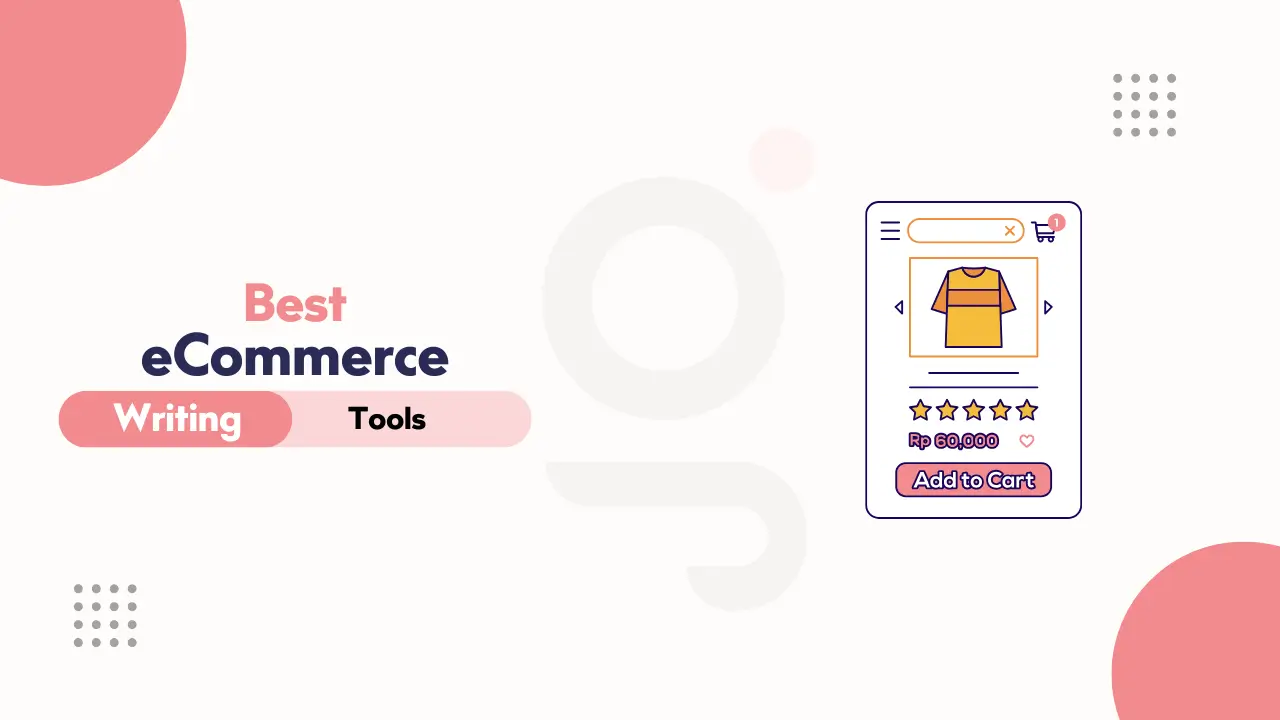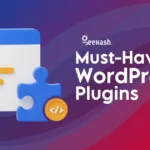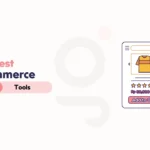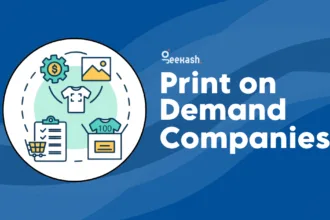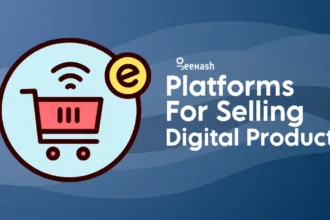Want to turn your blog into a money-making online business? The right eCommerce platform can make selling a breeze instead of giving you technical headaches. Your success rides on picking a platform that combines smoothly with your blog and gives you the tools you need to sell products well.
This piece will help you review popular options like Shopify, WooCommerce, and BigCommerce by looking at their features and pricing. You’ll discover what to look for in an eCommerce platform, how to build your online store and ways to market your products to your readers. You’ll find everything you need to pick the perfect platform for your blogging business, whether you plan to sell digital downloads or custom merchandise.
Best eCommerce Platforms for Bloggers
Let’s discover the best ecommerce platforms that will revolutionize your blog into a successful online business. Each platform provides unique benefits for content creators like you.
Shopify
Shopify emerges as a budget-friendly option for bloggers stepping into ecommerce. The platform keeps your operational costs much lower than other platforms and offers favorable implementation costs 1. You can launch your storefront 41% faster with Shopify compared to WooCommerce 1. The platform’s checkout system performs better and converts 17% more effectively than WooCommerce 1. This makes Shopify an excellent choice to maximize your sales potential.
WooCommerce
WooCommerce provides smooth blog integration for WordPress users. The platform integrates directly with your blogging platform and makes it easy to manage both content and products 2. Your content naturally attracts backlinks and visitors from search engines, which improves your SEO capabilities 2. But you should expect 32% higher platform costs than Shopify because of increased support needs 1.
BigCommerce
BigCommerce excels with its enterprise-level capabilities and reliable feature set. The platform has launched over 100 most important enhancements that include improved localization features and unique checkout experiences for every storefront 3. The implementation costs are 88% higher than Shopify 1, but you’ll get access to advanced features like AI-powered shopping experiences and improved B2B capabilities 3.
Squarespace
Squarespace stands out with its award-winning templates and detailed all-in-one functionality 4. The platform comes packed with these excellent features:
- Marketing tools that help you involve your audience
- Shopping cart and payment processing that work together
- Technical support team available 24/7
Wix
Wix stands out as an excellent platform for bloggers who want better SEO and user-friendliness. The platform comes with:
| Feature | Benefit |
|---|---|
| Drag-and-drop editor | True design flexibility |
| SEO tools | Beginner-friendly optimization |
| Mobile responsiveness | 93% fast-loading stores 4 |
Bloggers should pick a platform that matches their specific needs. Your technical skills, budget limits, and future plans play a key role in this decision. Shopify helps you get started quickly and keeps running costs low 1. WooCommerce works better with existing WordPress blogs 2. BigCommerce packs enterprise-level features 3. Squarespace and Wix shine when it comes to design and ease of use 4.
The platform you choose will shape how well you can grow and run your blog and ecommerce business. Each option brings its own strengths to the table. Make your choice based on your long-term business goals and current technical skills.


Key Features to Look for in an eCommerce Platform
The right ecommerce platform selection at the time of starting your blog needs a clear understanding of features that lead to success. Your search for the perfect platform should prioritize these significant elements.
Ease of use
A platform should not require a computer science degree to operate. The admin dashboard needs an accessible and well-designed interface where you spend the most important time managing products, processing orders, and checking analytics 5. The platform must include a strong content management system (CMS) that helps you create, edit, and manage all product and marketing content in one place 5.
Blogging capabilities
As a blogger, you need a platform with robust content management features. A good platform should let you:
- Control your website and blog posts from a single dashboard 6
- Create compelling, polished articles without hassle
- Let your blog blend naturally with your store
- Share content on social media and connect with customers 6
Payment options
A platform needs a variety of payment methods to boost sales. Mobile devices now drive almost 60% of searches that lead to purchases 7. The platform should include these payment features:
- Secure payment processing through multiple methods 8
- Support for digital wallets and mobile payments
- Integration with popular payment gateways
- Flexible options for international customers
Marketing tools
Ecommerce success depends on reliable marketing capabilities. Your chosen platform should include:
| Feature | Purpose |
|---|---|
| SEO Tools | Improve search visibility 7 |
| Email Marketing | Build lasting customer relationships 9 |
| Analytics Dashboard | Track performance metrics 8 |
| Social Media Integration | Connect with audiences on multiple channels |
Mobile responsiveness
Mobile commerce is growing faster than ever, making mobile optimization a must-have for your platform’s success. Your platform needs these key features:
- Pages that automatically adjust to mobile screens
- Quick loading speeds on mobile devices
- Easy-to-tap navigation elements
- A smooth checkout process for smartphone users
Security should be your top priority as you evaluate these features. Users hesitate to input financial and personal information on websites they don’t trust 7. Choose platforms with reliable security credentials that protect both your current operations and future expansion 7.
On top of that, think about scalability as you make your choice. Every business owner dreams of growth 7. Pick a platform that adapts to increased traffic and handles seasonal spikes smoothly 7. This approach will give a stable foundation for your store to grow with your blogging success without switching platforms later.
Take time to test all features before you make a big investment 7. Most platforms let you try free versions or demos. This hands-on experience helps you understand what works best for your needs before you commit to one solution.
Pricing Comparison of Top Platforms
The cost structure of different ecommerce platforms plays a significant role in making smart decisions that line up with your budget and business goals. The pricing components need a careful analysis to help you choose the right platform.
Free vs paid plans
Your online store journey starts with a choice between free and paid options. Free plans look tempting but they have several restrictions.
WooCommerce provides a free base platform, though you should consider hosting costs that range from $80 to $730 per month 10. Shopify proves more cost-effective with its platform costs, while WooCommerce users spend 32% more due to additional support requirements 1.
Platform Pricing Overview:
| Platform | Basic Plan | Advanced Plan |
|---|---|---|
| Shopify | $5/month | $2,300/month 11 |
| Squarespace | $16/month | $65/month 12 |
| Wix | $17/month | $159/month 11 |
| BigCommerce | $29/month | $299/month 11 |
Transaction fees
Transaction fees play a crucial role in determining your business’s profitability. These fees vary substantially between different platforms:
Payment Processing Rates:
- Shopify: 2.9% + $0.30 per online transaction 11
- WooCommerce: 2.9% + $0.30 per online transaction 11
- BigCommerce: 2.59% + $0.49 per transaction 11
- Squarespace: 2.9% + $0.30 per transaction 11
Selling products internationally brings extra costs. Your profit margins will change due to foreign transaction fees and currency exchange rates that come with cross-border sales 13.
Add-on costs
You’ll need to think about several extra expenses beyond subscription fees:
Essential Add-ons:
- Domain registration: $2-$20 annually 10
- SSL certificates: $20-$70 per year 10
- Web hosting: Varies by platform and traffic volume 10
Setup costs can affect your total investment by a lot. WooCommerce implementation costs 49% more than Shopify 1. BigCommerce users pay 32% more due to limited native enterprise capabilities 1.
The total cost of ownership (TCO) depends on these factors:
- Implementation and setup costs
- Platform fees and ecommerce stack expenses
- Operational and support costs
- Infrastructure requirements 1
WooCommerce and BigCommerce platforms offer the lowest payment processing prices 10. Shopify’s operational simplicity needs less developer support and leads to lower operating costs overall 1.
The right platform should balance current costs with future growth potential. Some platforms might look cheaper at first, but extra infrastructure, security, and maintenance can drive up your total expenses 14. Your platform’s pricing structure should support your blog’s growing ecommerce needs.
Setting Up Your Online Store
You’ve selected your platform, so let’s roll up our sleeves and build your online store. We will guide you through the steps that will change your blog into a thriving ecommerce business.
Choosing a domain name
Your domain name is the foundation of your online presence. Here’s what you need to think about at the time of selecting a domain name:
- Names shorter than 15 characters are easier to remember 15
- Your domain should be free of hyphens and double letters that cause typos 15
- The .com extension adds more credibility to your website 15
- A unique, brandable name will stimulate long-term growth 15
You should run a trademark search before you lock in your domain name to stay clear of legal issues 15. Many hosting companies give away free domains with their new hosting packages, and this can save you $9 to $24 in registration fees 15.
Customizing your storefront
Your storefront should showcase your blog’s personality and provide the best shopping experience possible. Pick a theme that matches your brand identity. Custom ecommerce development brings several advantages:
| Benefit | Impact |
|---|---|
| Better customer satisfaction | Improved user experience 16 |
| Improved business integration | Smooth operations 16 |
| Better search optimization | Better visibility 16 |
| Greater customization | Unique brand presence 16 |
A responsive design that works perfectly on all devices is crucial because mobile responsiveness plays a big role in your store’s success 16.
Adding products
Your online store’s success depends on product presentation. At the time of adding products, focus on everything below:
- Product Details: Add detailed descriptions and high-quality images, preferably on a white background 17
- SEO Optimization: Optimize product names, descriptions, and URLs to improve visibility 17
- Image Management: Your product images should maintain consistent dimensions to look professional 17
Note that appropriate taxes must be charged and items requiring shipping should be marked under the Variants section 17. This will give proper calculation of costs during checkout.
Configuring payments and shipping
Your store needs proper payment and shipping options setup to run smoothly. Your payment gateway setup should have:
- Multiple payment options like PayPal, Stripe, and Authorize.net 16
- Secure checkout process with encryption 16
- Clear shipping rates and delivery timeframes 18
A well-planned shipping strategy should have these elements:
- International shipping options if you plan to sell globally 18
- Multiple carrier integrations to get competitive rates 18
- Clear shipping policies and delivery estimates 18
Pro tip: You can boost sales by adding free shipping thresholds. Research shows that shipping costs affect purchase decisions by a lot 18.
Your store’s performance needs regular monitoring through analytics tools 16. This data helps you make smart choices about product placement, pricing strategies, and shipping options that optimize your store’s performance.
Marketing Your Blog Shop
A multi-channel approach that uses your existing blog audience while attracting new customers will effectively market your online store. Let’s head over to proven strategies that will boost your store’s visibility and sales.
SEO optimization
Your blog’s SEO foundation gives you an advantage in driving organic traffic to your store. Research indicates that online stores with strong SEO generate 32% more sales compared to those without proper optimization 19. Here’s how you can boost your search visibility:
On-Page Optimization
- Optimize product descriptions with relevant keywords
- Create unique meta descriptions for all product pages
- Implement structured data for rich snippets
- Ensure mobile responsiveness for all store pages
Your blog’s existing content can work harder by adding strategic links to relevant products within your posts. This internal linking approach helps search engines understand your site structure and creates natural paths for product discovery.
Email marketing
Email marketing stands out as one of the most economical marketing channels with an impressive 3,600% ROI 20. A successful email marketing strategy should emphasize personalization and automation to boost customer involvement and sales.
Key Email Campaigns to Implement:
- Welcome series for new subscribers (36.9% average open rate) 21
- Abandoned cart recovery emails (50% conversion rate for clicks) 21
- Post-purchase follow-ups
- Product review requests
Segmentation and personalization play vital roles in email marketing success. Automated emails produce 41% of all email orders while representing just 2% of sent emails 21. These numbers showcase the effectiveness of targeted, automated campaigns.
Social media integration
Social media is vital to ecommerce success. Research shows that 74% of consumers depend on their social networks to make purchasing decisions 19. Different platforms show varying levels of ecommerce success:
These tips will help boost your social media results:
- Optimize Your Profiles Business accounts need clear calls-to-action that guide users to your store. The right CTA buttons boost user engagement substantially 19.
- Use User-Generated Content Ask customers to share their product experiences. Reshare and tag customers who post content with your products 19. This strategy builds trust and expands your reach naturally.
- Create FOMO-Driven Campaigns Time-sensitive offers and exclusive deals create urgency. Exciting giveaway contests attract new followers and boost engagement 19.
Affiliate programs
An affiliate program helps you reach new audiences through trusted voices in your niche. Here are the vital factors to think about as you set up your program:
Program Structure:
- Commission rates that motivate promotion
- Cookie duration that fairly credits affiliates
- Clear terms and promotional guidelines
- Regular payment schedules
Partnerships with influencers can boost your reach and credibility by a lot. Find content creators whose audience matches your target market 19. The right affiliates should have:
- Quality content and high engagement rates
- Matching audience demographics and interests
- Brand value alignment
- Performance tracking capabilities
Your partners need these resources to succeed:
- High-quality product images and descriptions
- Promotional materials and banners
- Updates about new products
- Performance incentives and bonuses
Social proof should be part of your marketing strategy. Instagram users are active brand engagers – 75% interact with brands after seeing an ad 19. This makes authentic customer experiences and testimonials vital on all marketing channels.
Social login options at checkout make the buying process smoother. This simple change can improve conversion rates 19. Product pages and purchase confirmation pages should include social sharing buttons to encourage natural sharing and expand your reach 19.
A complete analytics system helps track your marketing success. Keep an eye on these key metrics:
- Email open rates and click-through rates
- Social media engagement and conversion rates
- Affiliate program performance
- SEO rankings and organic traffic growth
Making use of information this way helps optimize your marketing strategies and distribute resources effectively across channels.
Conclusion
Your blog’s transformation into a profitable business starts with picking the right eCommerce platform. Popular platforms come with their own strengths – Shopify makes operations smooth, WooCommerce fits perfectly with WordPress, and BigCommerce packs enterprise-level features. Your technical skills, budget, and business needs should guide your choice. You’ll also need features like mobile-friendly design, payment options, and marketing tools.
Building a successful online store goes beyond platform selection. Store setup, product displays, and marketing across channels need an all-encompassing approach. Email campaigns, social media presence, and strategic collaborations will expand your reach past your blog readers. Analytics tools help track performance and keep your store competitive. These elements are the foundations of steady growth in the ever-changing world of online retail.
FAQs
References
[1] – https://www.shopify.com/enterprise/blog/ecommerce-platform-comparison
[2] – https://www.contentpowered.com/blog/add-blog-woocommerce-store/
[3] – https://investors.bigcommerce.com/news-releases/news-release-details/bigcommerce-unveils-next-big-thing-100-new-and-innovative
[4] – https://www.forbes.com/advisor/business/software/best-blogging-platforms/
[5] – https://theecommmanager.com/ecommerce-operations/ecommerce-platform-features/
[6] – https://www.clarity-ventures.com/ecommerce/marketing-and-advanced-analytics/built-in-blogging-platform
[7] – https://www.wpdownloadmanager.com/features-in-an-e-commerce-platform/
[8] – https://blog.adnabu.com/shopify/ecommerce-marketing-tools/
[9] – https://xperiencify.com/ecommerce-marketing-tools/
[10] – https://www.bigcommerce.com/articles/ecommerce/ecommerce-cost/
[11] – https://www.webgility.com/blog/ecommerce-platform-fees
[12] – https://www.mehdiaoussiad.com/blog/squarespace-blog-pricing
[13] – https://sellersfi.com/resources/blog/transaction-fees-silent-killer-wallet/
[14] – https://www.whizconsulting.net/uk/blog/5-hidden-costs-related-to-e-commerce-businesses/
[15] – https://www.wpbeginner.com/beginners-guide/tips-and-tools-to-pick-the-best-domain-for-your-blog/
[16] – https://blog.powr.io/custom-e-commerce-website-development-a-detailed-guide
[17] – https://neilpatel.com/blog/how-to-create-an-ecommerce-website/
[18] – https://www.shopify.com/blog/ecommerce-business-blueprint
[19] – https://www.constantcontact.com/blog/how-to-integrate-social-media-with-ecommerce/
[20] – https://neilpatel.com/blog/how-to-maximize-ecommerce-store-sales-using-email-marketing/
[21] – https://www.omnisend.com/blog/email-marketing-must-haves/

